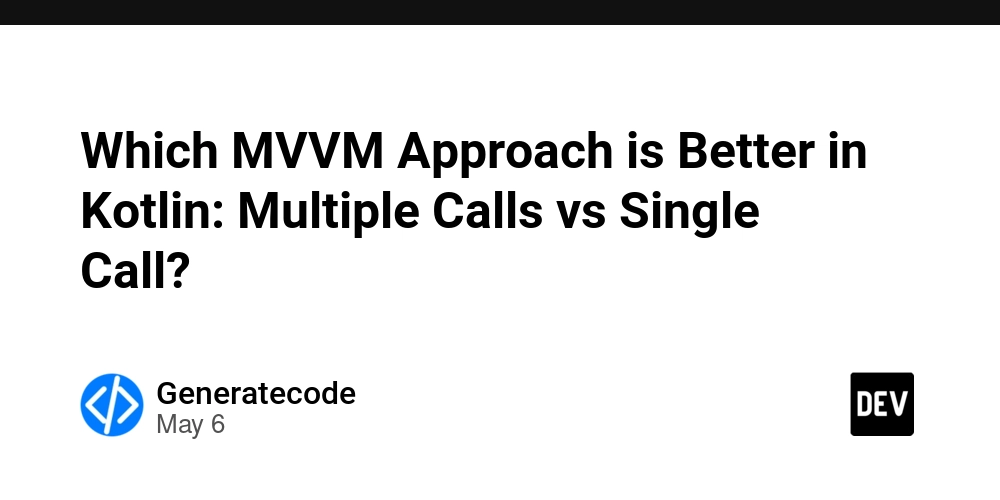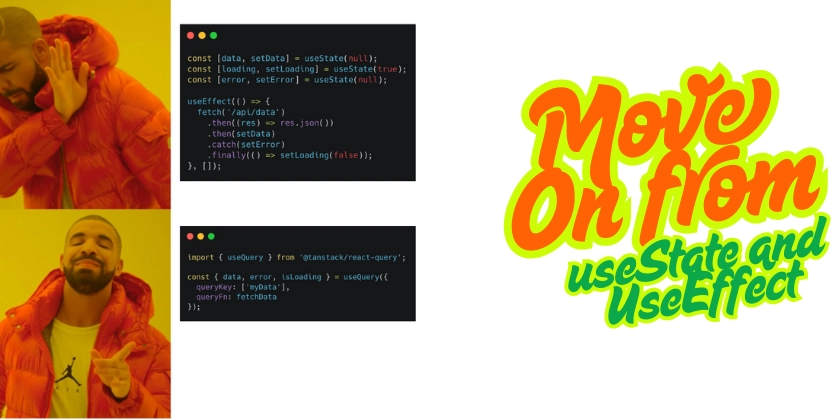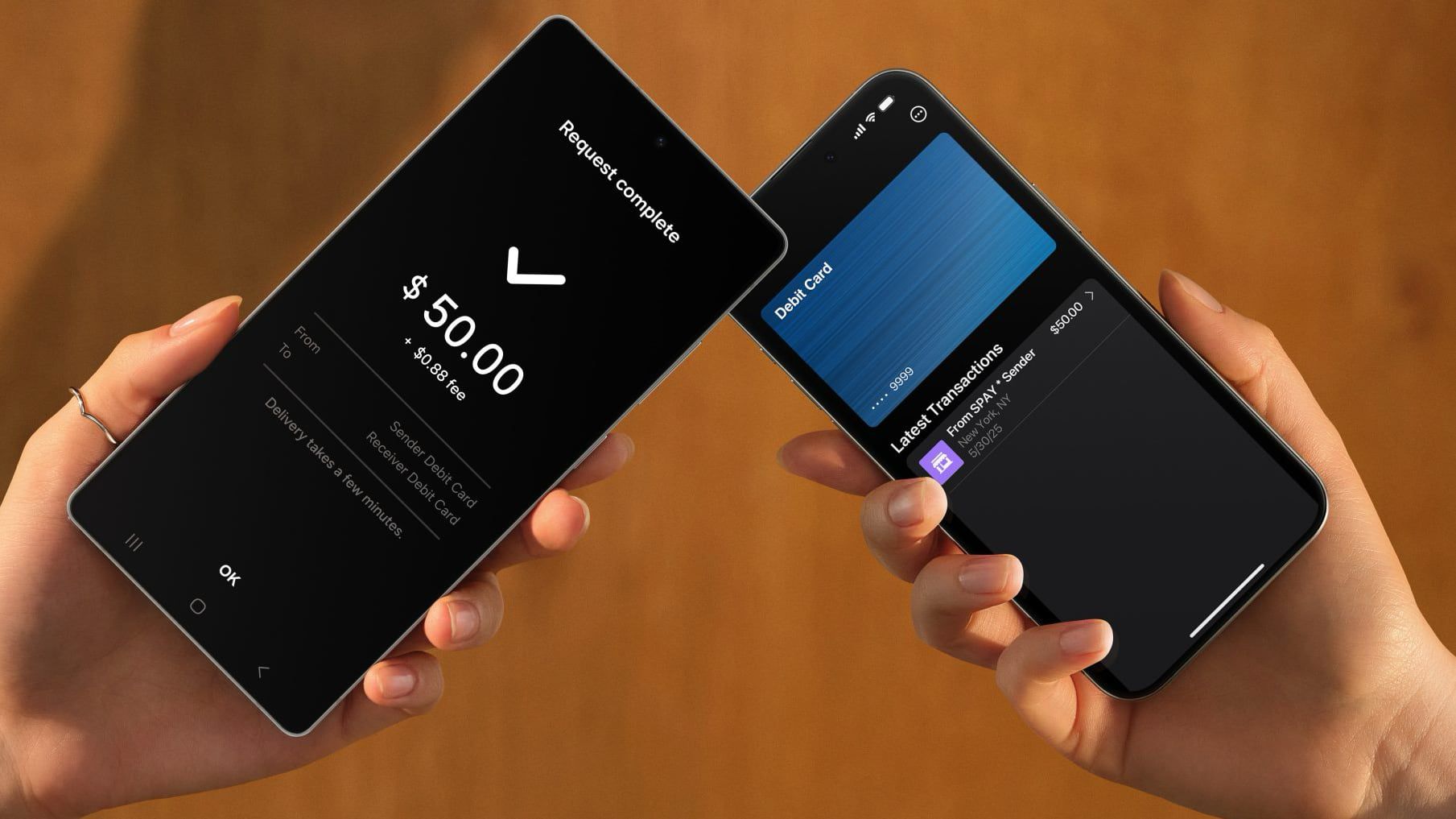Which MVVM Approach is Better in Kotlin: Multiple Calls vs Single Call?
In modern Android development, utilizing the MVVM (Model-View-ViewModel) architecture has become essential for maintaining clean and efficient code. A common question that arises among developers is whether to implement multiple function calls from the ViewModel to the repository class or consolidate these calls into a single function with the backend logic. In this article, we will explore both approaches, examine their pros and cons, and help you determine the best practice for your Kotlin applications. Understanding MVVM Architecture Before diving into the implementation details, let's briefly discuss what the MVVM architecture entails. The MVVM pattern separates the user interface (UI) from the business logic, allowing for a clean and maintainable codebase. The ViewModel acts as a bridge between the View and Model layers, handling data and communication while keeping the UI responsive and decoupled. Approach 1: Multiple Calls to Repository Functions Code Example The first approach utilizes three individual function calls from the ViewModel to the repository class, as shown below: class MyViewModel @Inject constructor( private val repo: MyRepo ): ViewModel() { fun getItems() = viewModelScope.launch { try { __myState.value = Result.Loading repo.perfromFirstOperation() repo.perfromSecondOperation() repo.perfromThirdOperation() } catch (e: Exception) { _myState.value = Result.Failure(e) } } } In this implementation, the ViewModel directly calls each repository function one after the other. This means that the ViewModel is responsible for handling the orchestration of operations. Pros Separation of Concerns: Each function in the repository adheres to the Single Responsibility Principle, handling specific tasks. Ease of Testing: Individual functions can be tested separately, allowing for more straightforward unit tests. Readability: The function calls in the ViewModel are explicit, making it clear what is happening in each operation. Cons Performance Overhead: Making multiple calls can lead to increased overhead, especially if the operations are dependent. Error Handling Complexity: Handling errors individually for each operation can complicate the code, making it harder to maintain. Approach 2: Single Call to a Function in Repository Code Example The second approach condenses all operations into a single function in the repository: class MyViewModel : ViewModel() { fun getItems() = viewModelScope.launch { try { __myState.value = Result.Loading repo.perfromFirstOperation() } catch (e: Exception) { _myState.value = Result.Failure(e) } } } Here, the perfromFirstOperation function encapsulates all operations within itself: class MyRepoImpl @Inject constructor( private val auth: FirebaseAuth ) : MyRepo { override suspend fun perfromFirstOperation() { firstOperation.await() secondOperation.await() thirdOperation.await() } } This approach allows for a single point of interaction, where all backend logic is handled by one function. Pros Reduced Complexity: With one function call, the ViewModel is simplified, focusing only on obtaining data. Improved Performance: Reduced overhead due to fewer function calls can result in better performance, especially with network calls. Centralized Error Handling: It’s easier to manage exceptions and errors within one function than across multiple ones. Cons Tight Coupling: The ViewModel becomes dependent on how the repository chains its operations, leading to potential challenges in testing or modifying the behavior of operations. Less Readability: The repository function performing multiple tasks might obscure the logical flow when reading through the ViewModel. Which Approach is Better? When deciding between these two approaches, consider the following factors: Complexity of Operations: If each operation is relatively straightforward and there are significant error management needs, go with the first approach for clear readability and unit testing. Interdependence of Operations: If the three operations significantly depend on one another, consolidating them into a single function makes logical sense. Performance Benefits: Always weigh the performance enhancements against the simplicity and maintainability of your code. If using a single call leads to noticeable performance improvements and the operations are well-defined, it could be the better choice. Frequently Asked Questions What is MVVM? MVVM stands for Model-View-ViewModel, a software design pattern used primarily in Android development to separate concerns and promote maintainability. How do I choose between multiple functions or a single function? Evaluate the complexity of your operations and whether they are interdependent. Choose the method that maximizes maintainabil

In modern Android development, utilizing the MVVM (Model-View-ViewModel) architecture has become essential for maintaining clean and efficient code. A common question that arises among developers is whether to implement multiple function calls from the ViewModel to the repository class or consolidate these calls into a single function with the backend logic. In this article, we will explore both approaches, examine their pros and cons, and help you determine the best practice for your Kotlin applications.
Understanding MVVM Architecture
Before diving into the implementation details, let's briefly discuss what the MVVM architecture entails. The MVVM pattern separates the user interface (UI) from the business logic, allowing for a clean and maintainable codebase. The ViewModel acts as a bridge between the View and Model layers, handling data and communication while keeping the UI responsive and decoupled.
Approach 1: Multiple Calls to Repository Functions
Code Example
The first approach utilizes three individual function calls from the ViewModel to the repository class, as shown below:
class MyViewModel @Inject constructor(
private val repo: MyRepo
): ViewModel() {
fun getItems() = viewModelScope.launch {
try {
__myState.value = Result.Loading
repo.perfromFirstOperation()
repo.perfromSecondOperation()
repo.perfromThirdOperation()
} catch (e: Exception) {
_myState.value = Result.Failure(e)
}
}
}
In this implementation, the ViewModel directly calls each repository function one after the other. This means that the ViewModel is responsible for handling the orchestration of operations.
Pros
- Separation of Concerns: Each function in the repository adheres to the Single Responsibility Principle, handling specific tasks.
- Ease of Testing: Individual functions can be tested separately, allowing for more straightforward unit tests.
- Readability: The function calls in the ViewModel are explicit, making it clear what is happening in each operation.
Cons
- Performance Overhead: Making multiple calls can lead to increased overhead, especially if the operations are dependent.
- Error Handling Complexity: Handling errors individually for each operation can complicate the code, making it harder to maintain.
Approach 2: Single Call to a Function in Repository
Code Example
The second approach condenses all operations into a single function in the repository:
class MyViewModel : ViewModel() {
fun getItems() = viewModelScope.launch {
try {
__myState.value = Result.Loading
repo.perfromFirstOperation()
} catch (e: Exception) {
_myState.value = Result.Failure(e)
}
}
}
Here, the perfromFirstOperation function encapsulates all operations within itself:
class MyRepoImpl @Inject constructor(
private val auth: FirebaseAuth
) : MyRepo {
override suspend fun perfromFirstOperation() {
firstOperation.await()
secondOperation.await()
thirdOperation.await()
}
}
This approach allows for a single point of interaction, where all backend logic is handled by one function.
Pros
- Reduced Complexity: With one function call, the ViewModel is simplified, focusing only on obtaining data.
- Improved Performance: Reduced overhead due to fewer function calls can result in better performance, especially with network calls.
- Centralized Error Handling: It’s easier to manage exceptions and errors within one function than across multiple ones.
Cons
- Tight Coupling: The ViewModel becomes dependent on how the repository chains its operations, leading to potential challenges in testing or modifying the behavior of operations.
- Less Readability: The repository function performing multiple tasks might obscure the logical flow when reading through the ViewModel.
Which Approach is Better?
When deciding between these two approaches, consider the following factors:
- Complexity of Operations: If each operation is relatively straightforward and there are significant error management needs, go with the first approach for clear readability and unit testing.
- Interdependence of Operations: If the three operations significantly depend on one another, consolidating them into a single function makes logical sense.
- Performance Benefits: Always weigh the performance enhancements against the simplicity and maintainability of your code. If using a single call leads to noticeable performance improvements and the operations are well-defined, it could be the better choice.
Frequently Asked Questions
What is MVVM?
MVVM stands for Model-View-ViewModel, a software design pattern used primarily in Android development to separate concerns and promote maintainability.
How do I choose between multiple functions or a single function?
Evaluate the complexity of your operations and whether they are interdependent. Choose the method that maximizes maintainability without sacrificing performance.
Can I refactor later if I choose one approach?
Absolutely! Code is inherently flexible, and refactoring is part of the development process. Choose the approach that suits your immediate needs and refactor as your project evolves.
In conclusion, both approaches have their own merits and pitfalls. Understanding the context in which you are working will greatly aid in making the right decision for your application. By considering the complexity, performance, and maintainability of your code, you can implement the most effective solution for your Kotlin MVVM architecture.






































































































































































![[The AI Show Episode 146]: Rise of “AI-First” Companies, AI Job Disruption, GPT-4o Update Gets Rolled Back, How Big Consulting Firms Use AI, and Meta AI App](https://www.marketingaiinstitute.com/hubfs/ep%20146%20cover.png)

















































































































































































.jpg?width=1920&height=1920&fit=bounds&quality=70&format=jpg&auto=webp#)






















































































_Alexey_Kotelnikov_Alamy.jpg?width=1280&auto=webp&quality=80&disable=upscale#)
_Brian_Jackson_Alamy.jpg?width=1280&auto=webp&quality=80&disable=upscale#)



 Stolen 884,000 Credit Card Details on 13 Million Clicks from Users Worldwide.webp?#)




























































































![Roku clarifies how ‘Pause Ads’ work amid issues with some HDR content [U]](https://i0.wp.com/9to5google.com/wp-content/uploads/sites/4/2025/05/roku-pause-ad-1.jpg?resize=1200%2C628&quality=82&strip=all&ssl=1)











![Apple Seeds visionOS 2.5 RC to Developers [Download]](https://www.iclarified.com/images/news/97240/97240/97240-640.jpg)
![Apple Seeds tvOS 18.5 RC to Developers [Download]](https://www.iclarified.com/images/news/97243/97243/97243-640.jpg)




































































































